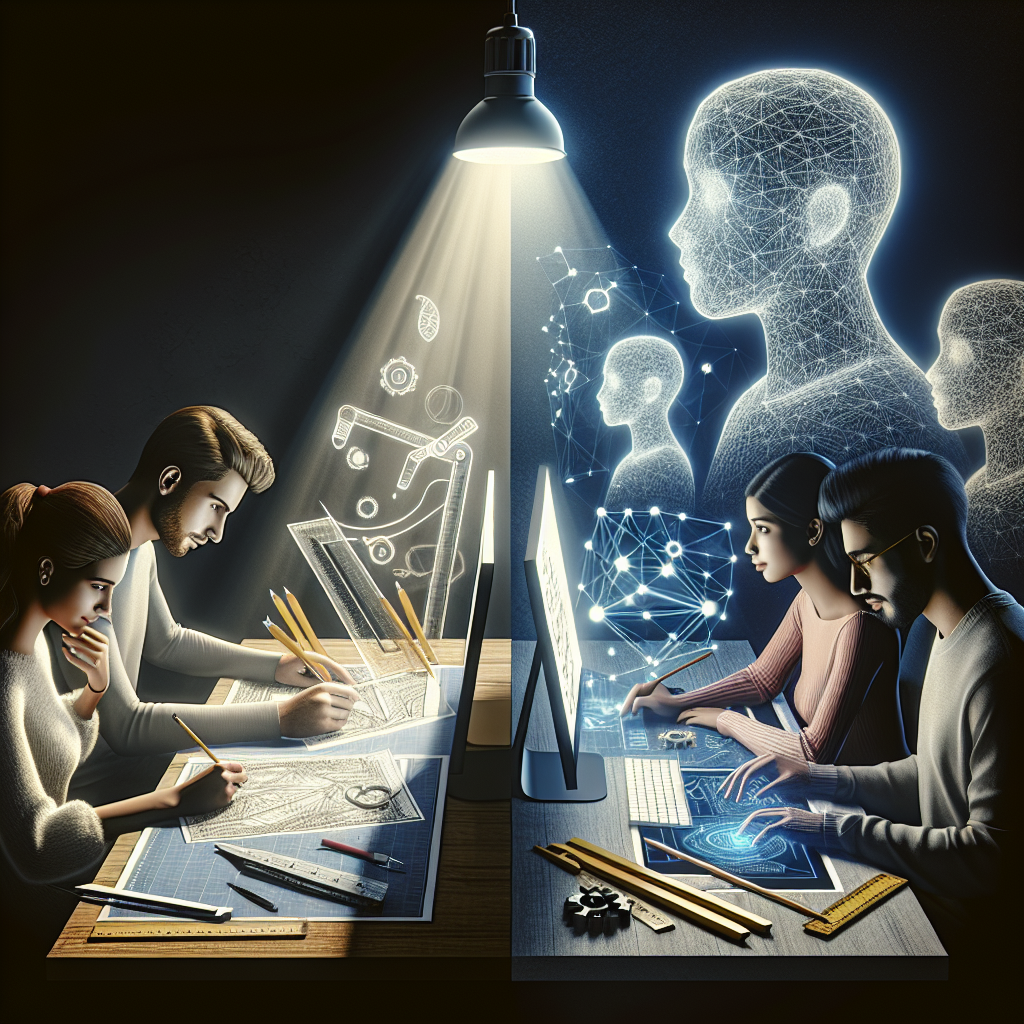Generative Artificial Intelligence (AI) is revolutionizing many industries, including user interface design. This technology uses algorithms to generate designs, layouts, and even entire websites without the need for human intervention. The impact of generative AI on user interface design is profound, as it allows for faster, more efficient, and more personalized designs.
One of the key benefits of generative AI in user interface design is the ability to generate a large number of design variations quickly. This allows designers to explore different options and test them with users to see which designs are most effective. In the past, designers would have to manually create each variation, which was time-consuming and limited the number of designs that could be tested. With generative AI, designers can create hundreds or even thousands of variations in a fraction of the time.
Generative AI also allows for more personalized user interfaces. By analyzing user data and behavior, AI algorithms can create designs that are tailored to each individual user. This can lead to a more engaging and user-friendly experience, as the design can adapt to the user’s preferences and needs.
In addition, generative AI can help designers overcome creative blocks. By providing suggestions and generating new ideas, AI algorithms can inspire designers and help them break out of their usual design patterns. This can lead to more innovative and creative designs that push the boundaries of what is possible in user interface design.
However, there are also challenges associated with the use of generative AI in user interface design. One of the main challenges is ensuring that the designs generated by AI algorithms are of high quality. While AI algorithms can generate a large number of designs quickly, not all of them will be suitable for use. Designers need to carefully review and test the designs to ensure that they meet the desired criteria.
Another challenge is ensuring that the designs generated by AI algorithms are accessible to all users. Designers need to consider factors such as color contrast, font size, and navigation patterns to ensure that the design is usable for people with disabilities. This requires a careful balance between automation and manual intervention to create designs that are both efficient and inclusive.
Despite these challenges, the impact of generative AI on user interface design is undeniable. This technology has the potential to revolutionize the way we create and interact with digital interfaces, leading to more personalized, engaging, and innovative designs.
FAQs
Q: How does generative AI work in user interface design?
A: Generative AI uses algorithms to analyze user data, behavior, and design patterns to generate layouts, designs, and websites. By leveraging machine learning and automation, generative AI can create a large number of design variations quickly and efficiently.
Q: What are the benefits of using generative AI in user interface design?
A: Some of the key benefits of generative AI in user interface design include faster design iterations, personalized user interfaces, and overcoming creative blocks. This technology allows designers to explore a wide range of design options and create more engaging and user-friendly interfaces.
Q: What are the challenges of using generative AI in user interface design?
A: Some of the challenges of using generative AI in user interface design include ensuring the quality of the designs generated, making sure the designs are accessible to all users, and striking a balance between automation and manual intervention. Designers need to carefully review and test the designs to ensure they meet the desired criteria.
Q: How can generative AI help designers overcome creative blocks?
A: Generative AI can help designers overcome creative blocks by providing suggestions, generating new ideas, and inspiring designers to think outside the box. By leveraging AI algorithms, designers can push the boundaries of what is possible in user interface design and create more innovative and creative designs.
In conclusion, the impact of generative AI on user interface design is significant. This technology has the potential to revolutionize the way we create and interact with digital interfaces, leading to more personalized, engaging, and innovative designs. While there are challenges associated with the use of generative AI in user interface design, the benefits far outweigh the drawbacks. By leveraging the power of AI algorithms, designers can create more efficient, user-friendly, and inclusive designs that push the boundaries of what is possible in user interface design.

